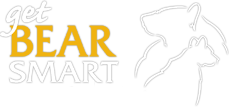An overview for policy makers and wildlife professionals
As policy makers and wildlife professionals, there is a significant amount of thought and effort that can be incorporated into the early stages of planning roadways to reduce collisions with wildlife. For already existing highways, mitigation to reduce wildlife collision is important not just for wildlife, but also for public safety.
Understanding the Stats
One of the most important factors for identifying a successful approach to reducing conflict and collision is to collect information from historical data. In British Columbia, a variety of stakeholders collect this data. Combined, this data will give insight into what is happening on your local highways.
The Insurance Corporation of British Columbia (ICBC) collects data from vehicle insurance claims, the Royal Canadian Mounted Police (RCMP) keep records of human fatalities and injuries caused by vehicle accidents, and the Ministry of Transportation and Highways (MoTH) collects information on dead wildlife found along the highways that is removed by highway maintenance contractors through their Wildlife Accident Reporting System (WARS). The Biodiversity Centre for Wildlife Studies also collects data from the public through the voluntary RoadWatch BC program. Conservation Officer Services (COS) removes carcasses from highways; however this data is often not recorded or available to the public.
Data for the number of animals injured or killed on the highway is extremely under reported for a variety of reasons. Many animals that are struck and injured flee from the side of the road and later die from their injuries away from the highway. Wildlife collision insurance provided by ICBC is optional in British Columbia and the extent of vehicular damage has to be significant enough to make a claim should the driver have this additional coverage. Furthermore, ICBC stats are not required to denote species. Stats provided by MoTH do not include carcasses that are obstructed by snow or vegetation, carcasses that are dragged out of view by scavengers or carcasses that are collected by the public for hide and pelt removal. MoTH estimates that WARS data represents only 25-35% of animals killed.
Determining what information to extrapolate from the data is also important. For example, what species are you targeting? Is there historical data for the area of focus that enables you to identify: numbers, sex, time of collisions, and high collision locations? Are the high wildlife collision zones located within wildlife corridors? Are animals being attracted due to roadside vegetation or other attractants such as carcasses of other road kill?
Mitigation Techniques
Research has commenced in recent years throughout North America and abroad to identify successful techniques for decreasing vehicle wildlife collisions. All of the techniques mentioned below have advantages and disadvantages. For example, is fencing appropriate, or do does it create a trap for animals trying to cross: blocking off corridors that could isolate wildlife populations? Is fencing appropriate for bears, which can dig under the fencing? Do barriers make it difficult for females with offspring to cross? Does additional signage create more “wildlife viewing jams” when drivers are alerted to wildlife on the roadside? These are some of the questions that are important to ask when addressing mitigation for wildlife collisions on highways.
Road structure countermeasures include: fencing, passage structures (over- and under-passes), reflectors, increased signage, biological and chemical repellents, animal detection systems, vehicle detection systems, and highway lighting.
Automotive technologies include: Infrared camera’s and air fed and electronic whistles, increased driver visibility techniques such as high intensity discharge (HID) headlights, adaptive front lighting systems, and collision warning systems.
For a detailed analysis of advantages and disadvantages, visit the Transport Canada Safety and Security document, Overview of Technologies Aimed at Reducing and Preventing Large Animal Strikes: Download report.
Resources and reports:
BC Ministry of Transportation and Highways: Wildlife Accident Reporting System.
Wildlife Provision Prevention Program: What can highway managers do?
Wildlife Exclusion Systems for Accident Mitigation on British Columbia Highways: Download report.
Collisions involving motor vehicles and large animals in Canada: Download report.
Highways and Wildlife: A Review of Mitigation Projects throughout: Europe, Canada, and the United States: Download report.
Overview of Technologies Aimed at Reducing and Preventing Large Animal Strikes: Download report.
